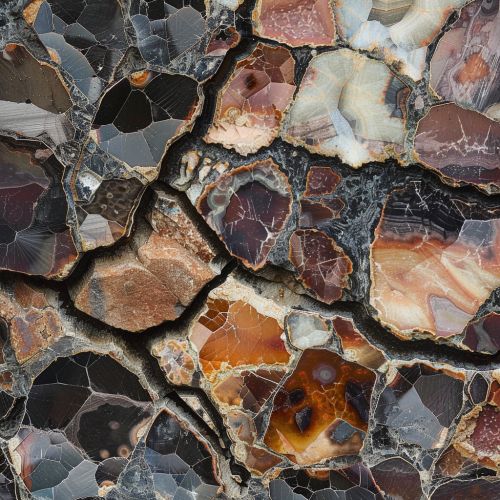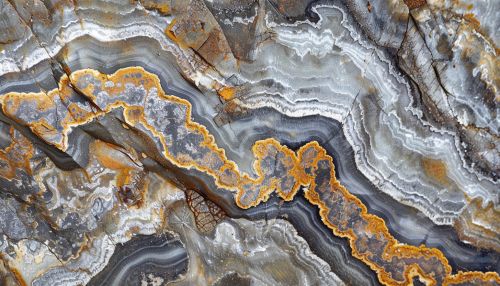Metamorphic grade
Introduction
Metamorphic grade is a scale denoting the intensity of metamorphism that a rock has undergone. It is a measure of the degree of metamorphic change from the original parent rock, or protolith, to the metamorphosed rock. The grade of metamorphism is primarily determined by the temperature and pressure conditions under which the rock metamorphosed.
Metamorphic Processes
Metamorphism involves the mineralogical, chemical, and structural adjustment of solid rocks to physical and chemical conditions that have been imposed at depths below the surface zones of weathering and diagenesis, and which differ from conditions under which the rocks in question originated. The changes involved can be of a varied nature, but they are all brought about by the activity of fluids, heat, and pressure.
Metamorphic Facies
The concept of metamorphic facies is a systematic way to look at the mineral assemblages in rocks brought about by changes in pressure and temperature conditions in the Earth's crust. The mineral changes in the rock are always moving towards achieving equilibrium under the new temperature and pressure conditions. The changes can be progressive, going through a series of mineral assemblages.
Metamorphic Grade and Index Minerals
Metamorphic grade is a general term for describing the relative temperature and pressure conditions under which metamorphic rocks form. Low-grade metamorphism takes place at temperatures between about 200 to 320 °C, and relatively low pressure. Low grade metamorphic rocks are generally characterized by an abundance of hydrous minerals. With increasing grade of metamorphism, the hydrous minerals begin to react with other minerals and/or break down to less hydrous minerals.


Low-Grade Metamorphism
Low-grade metamorphism takes place at temperatures between about 200 to 320 °C, and relatively low pressure. Low grade metamorphic rocks are generally characterized by an abundance of hydrous minerals. In low-grade metamorphism, textures and mineralogical content of the rocks change, but the rock’s bulk chemical composition typically remains unchanged.
Intermediate-Grade Metamorphism
Intermediate-grade metamorphism is a type of metamorphism where the temperature and pressure conditions fall between the low-grade and high-grade metamorphism. The mineral assemblages in such rocks are indicative of the metamorphic conditions and can be used to get a sense of the pressures and temperatures at the time of metamorphism.
High-Grade Metamorphism
High-grade metamorphism involves high temperature and high pressure, and is usually the result of deep burial of rocks. High-grade metamorphic rocks are often deformed and/or migmatized. Migmatites are rocks that have undergone partial melting, and have features of both igneous and metamorphic rocks.
Metamorphic Zones
Metamorphic zones are areas where the same combination of minerals is found in metamorphic rocks of the same composition. These zones are usually parallel to a tectonic plate boundary or other heat source, and are often used to infer the conditions under which certain metamorphic rocks formed.
Conclusion
Understanding the metamorphic grade of a rock can provide valuable information about the conditions under which it formed. By studying the mineralogy and texture of a metamorphic rock, geologists can infer the temperature and pressure conditions that led to its formation, and can gain insights into the geologic history of the area where the rock was found.
